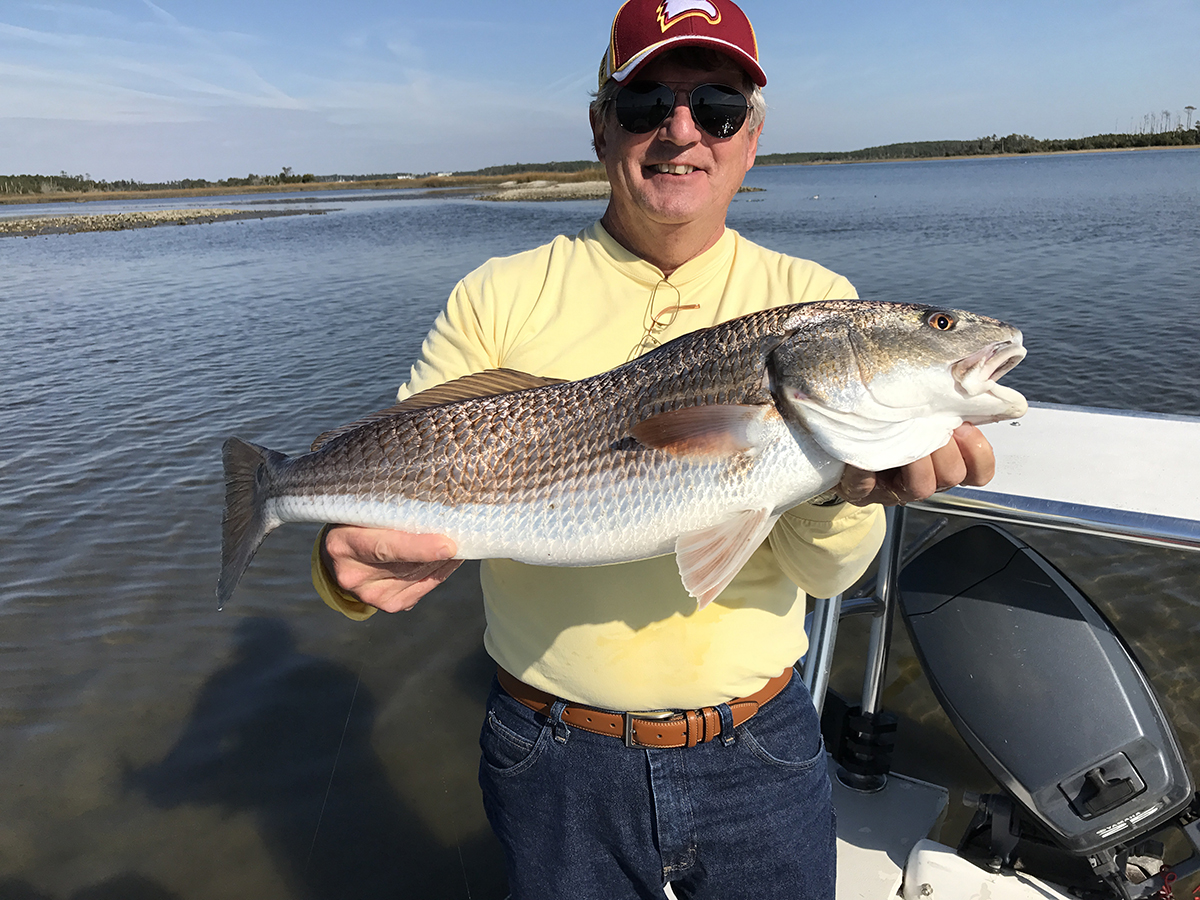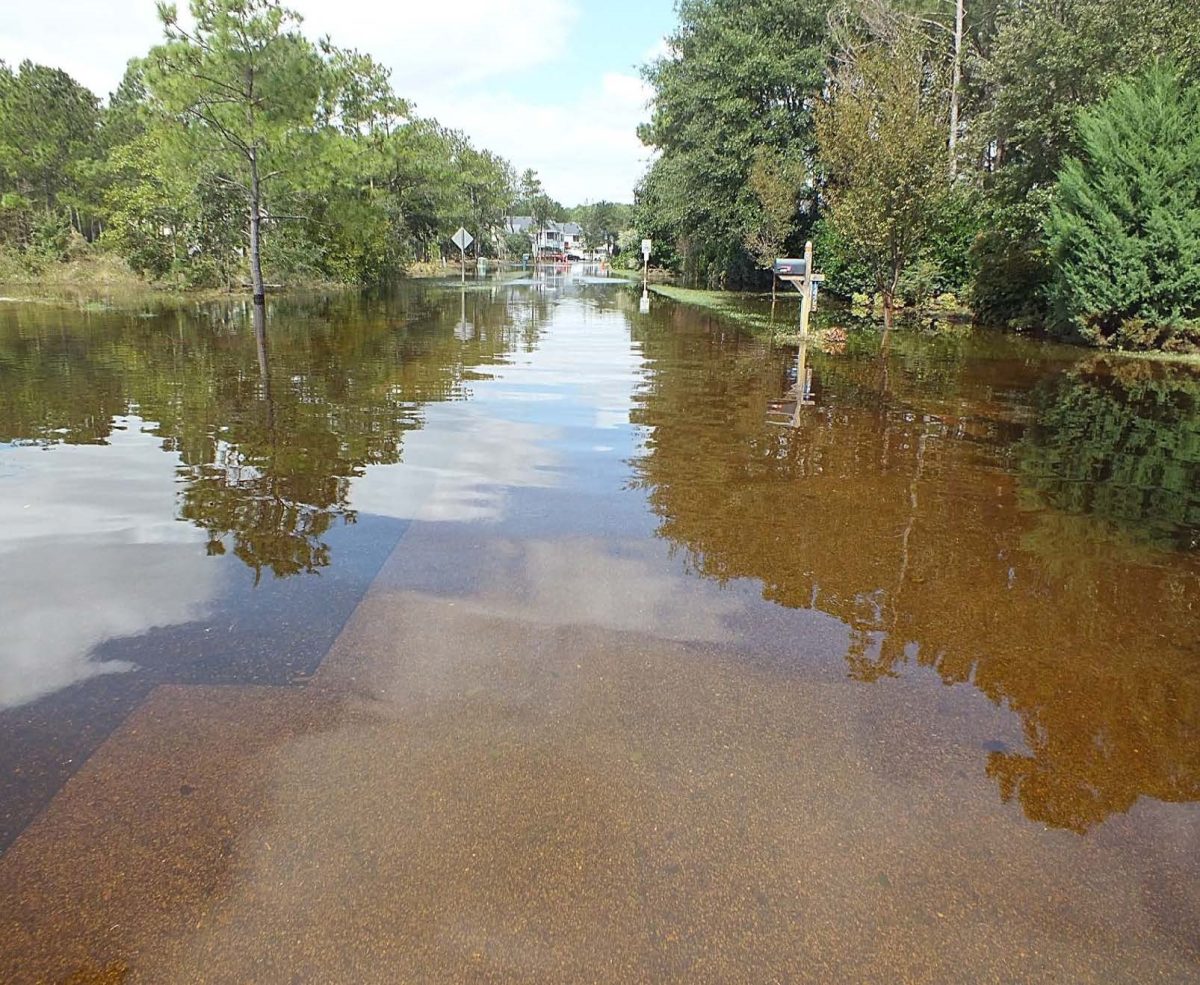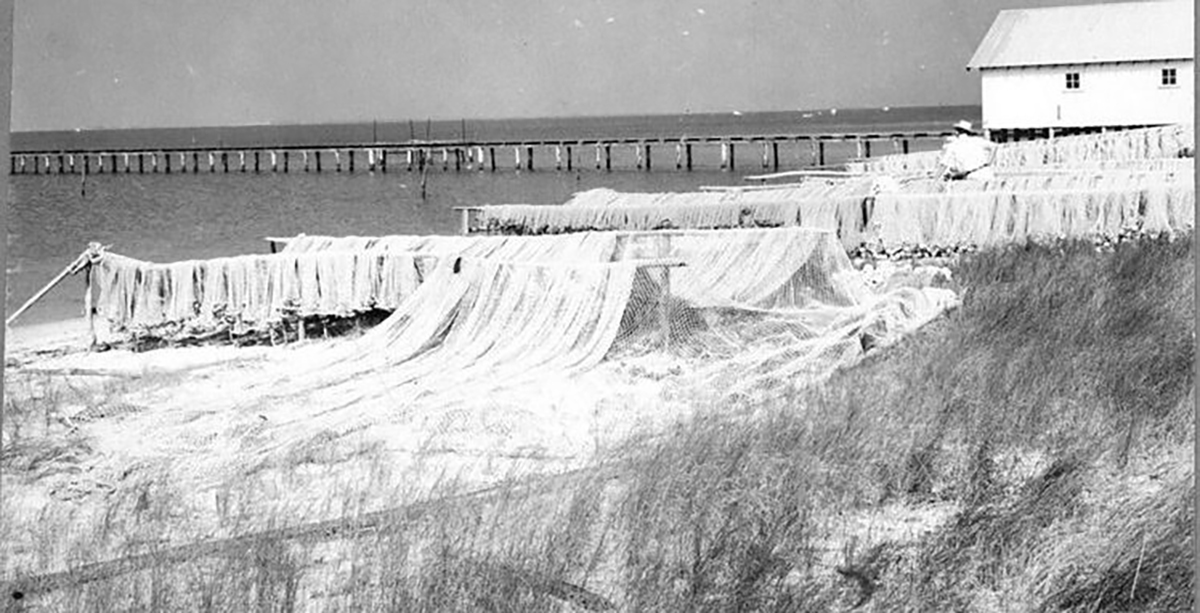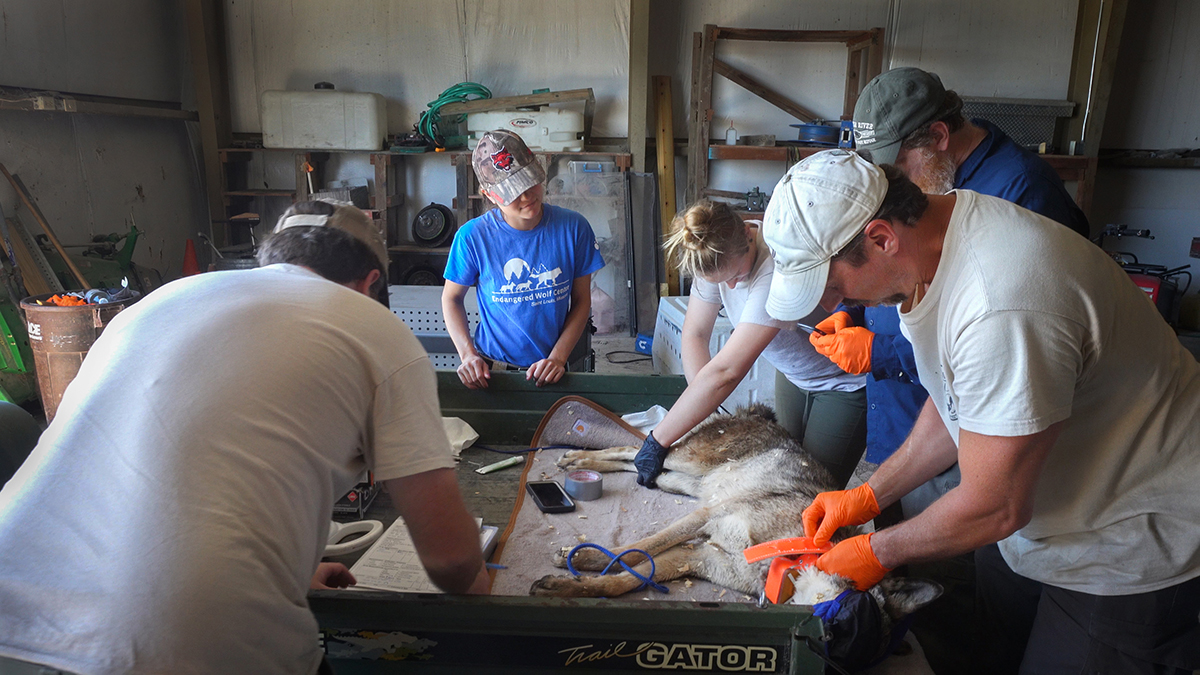
MANTEO — Deven was born three years ago, and was still living with his parents, Charlotte and Jack, and three siblings, Marley, Maple and Ben.
Compared with the rest of the family, Deven was shy, suspicious and stand-offish.
Supporter Spotlight
In the world of red wolf conservation, those qualities made him an excellent candidate for life in the wilds of northeastern North Carolina.
“He was the most elusive of his siblings,” Maggie Howell, executive director of the Wolf Conservation Center in South Salem, New York, told Coastal Review. “If you’d see all of them together, he’d be in the very back. He was kind of a wallflower.”
Wolves are by nature wary, she said, and the stronger the tendency, the better adaptation to coexistence in environments shared with humans.
The center currently has 38 wolves, including 21 Mexican gray wolves, 14 red wolves and three educational ambassadors. They’re fed roadkill deer and rarely interact at all with people. They have numeric names, also, but the human names make the animals more sympathetic, an important component of conservation.
“It’s really hard to get people open to embracing these really unique species and care about them if they have names like robots,” Howell said.
Supporter Spotlight
Deven was one of eight captive red wolves — four adults and four pups — that have been recently transferred to North Carolina as part of the U.S. Fish and Wildlife Service’s red wolf recovery program. Since his arrival at the refuge, the young wolf has been fitted with a radio collar and is now roaming the forested swamps of the management area, 1.7 million acres of public and private land in Beaufort, Dare, Hyde, Tyrrell and Washington counties.
And if all goes as well as refuge managers hope, Deven will find himself a red wolf mate.
“What they want is for him to forge a bond so he can breed,” Howell said. “We certainly hope that this can be an active management effort like it used to be. We don’t want to have animals in captivity in vain. We need them in the wild.”
The other three adult wolves came from the Endangered Wolf Center in Missouri and Wolf Haven International in Washington state, and the four pups came from the Akron Zoo, according to a press release Wednesday from the Endangered Wolf Center.
“This collaborative effort is the first time since 1998 that adult American red wolves were released directly into the recovery area of Eastern North Carolina from managed care facilities,” according to the release, “and is the first time since 2014 that red wolf pups have been fostered into the wild from managed care facilities.”
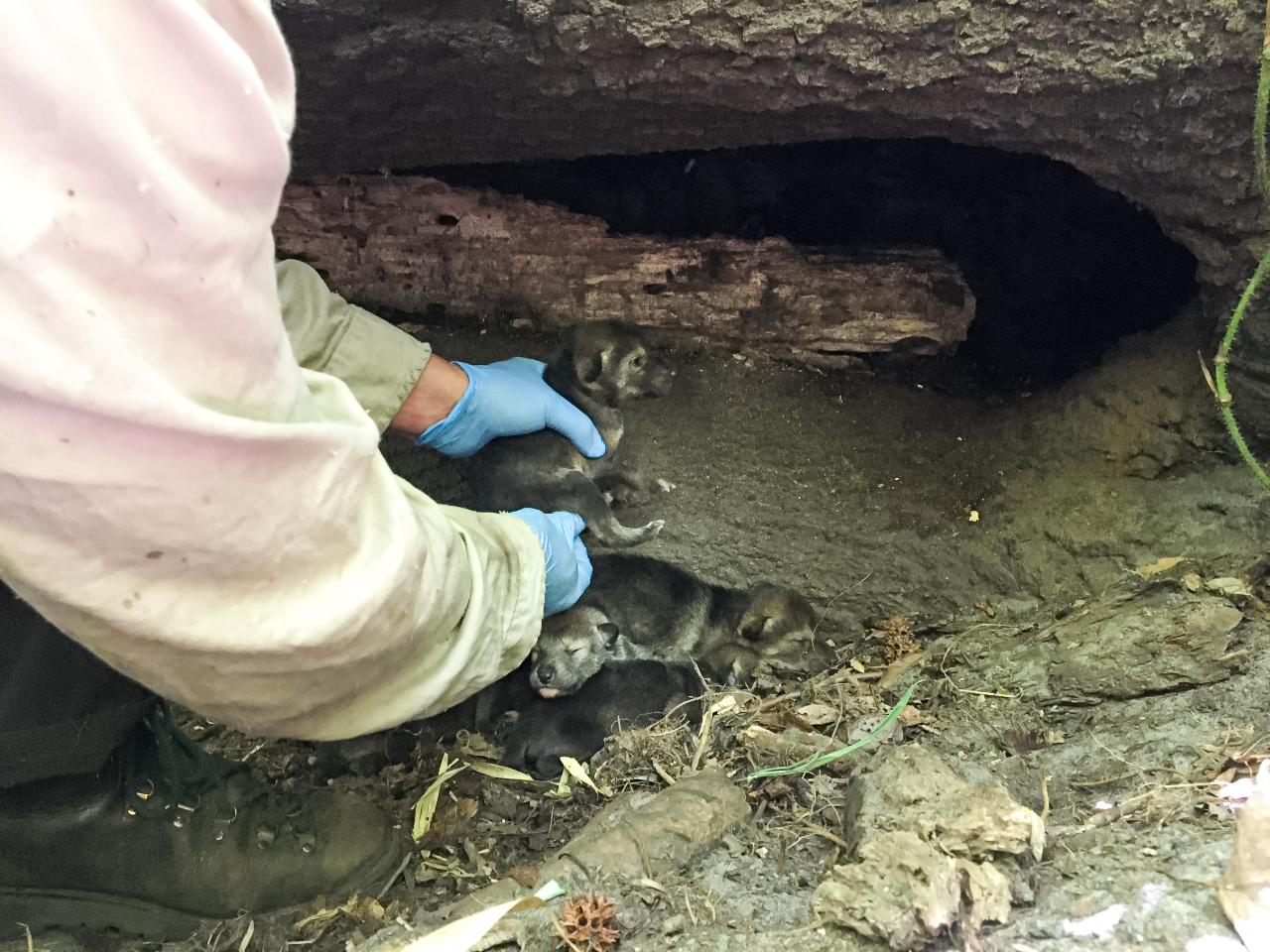
Essentially, fostering involves sneaking pups into litters with pups about the same age when the mother leaves the den to hunt. Remarkably, most wolf mothers will adopt the newcomers and care for them as her own.
In the most recent fostering, all four captive-bred pups were slipped into a den on May 1, and so far, it appears that the pups have been adopted, Fish and Wildlife Region 2 Public Affairs Specialist Jennifer Koches said in an email, responding to Coastal Review.
“In January 2022, we will evaluate the ‘success’ based on survival,” she said. “The den is monitored from a distance as to not cause disturbance. Once the pups are older and move away from the den site, attempts will be made to monitor them as with all wild red wolves.”
Including the pups, there are currently 18 red wolves that are known to be in the population, Koches said. Of the recent releases, two adult red wolves were at Alligator River National Wildlife Refuge and two were at Pocosin Lakes National Wildlife Refuge. The pups are in a den at Pocosin Lakes.
Historically, American red wolves once thrived in a wide range along the U.S. Gulf and Southeast coastal regions, from Pennsylvania to Missouri to Texas to Florida. But between overhunting and habitat loss, the population declined dramatically. In 1973, the red wolf was listed on the Endangered Species Act as endangered, and in 1980, the species was declared extinct in the wild.
But in 1970s, the U.S. Fish and Wildlife Service had managed to capture a few wild red wolves on the Gulf Coast, and began a captive breeding program. In 1987, four pairs of captive-bred wolves were released into Alligator River National Wildlife Refuge. Today, more than 200 captive-bred red wolves are housed in facilities throughout the country, but the only known wild wolves are in North Carolina.
The saga of the red wolf recovery program over the years is nearly as tangled as the dense swamp forests in which the wolves prowl.
With innovative management techniques such a pup fostering and sterilizing coyotes to hold territory and prevent hybridization, the wild population steadily grew. By 2005, as many as 150 red wolves were estimated to be living in the recovery area, and the program was lauded nationwide for its effectiveness. But less than 10 years later, the wolf population had been depleted and the management was undermined by politics and underfunding.
Considering that the number of collared red wolves not long ago had been as few as seven, with perhaps another dozen unmonitored, it’s encouraging to see more wolves being added to the population, said Ramona McGee, staff attorney for the Southern Environmental Law Center in Chapel Hill.
“This is great news,” she told Coastal Review. “We need to make sure this is not a one-off event.”
In November 2020, the law center, representing nonprofit groups Red Wolf Coalition, Defenders of Wildlife and the Animal Welfare Institute, filed a lawsuit against Fish and Wildlife, contending that the agency had failed to uphold its obligation under the Endangered Species Act to implement management practices to conserve the animals. In a separate action that month, the conservation groups requested a preliminary injunction to halt the agency’s recent policy to not release captive wolves, saying that the wolves were at risk of going extinct while the lawsuit was pending.
Specifically, the law center wanted Fish and Wildlife to resume immediately its management plan that had included freeing captive wolves, including pups, into the wild. A federal judge ruled in January that the agency must develop a release plan by March 1.
But when the plan was provided, it only called for release of one pair of wolves. After the law center filed a response that said that at least eight wolves needed to be added for the population to recover and performance measures needed to be developed to track progress, the agency eventually amended its plan and released the eight captive wolves in late April and early May.
“It’s exciting,” McGee said about the releases. “I think it’s also important to remember that it took a court order to get the agency here.”
Koches, with Fish and Wildlife, declined to comment on the ongoing legal actions.
McGee said the groups want more transparency and accountability from the agency about its recovery plan management decisions, actions and results. They also requested ongoing court supervision.
At a status conference on Thursday with U.S. District Court for the Eastern District of North Carolina District Judge Terrence Boyle and the agency, McGee said that their concerns were heard, but for now, no action was taken.
The next step, she said, is “to see when and whether the court issues any order about our concerns.”
But, she added, that doesn’t necessarily mean they’re on hold.
“I think we all are continuing to monitor this situation closely,” McGee said. “We will be very interested to learn more about how these releases go and anything else the agency volunteers to share with us about the state of red wolf recovery.”



